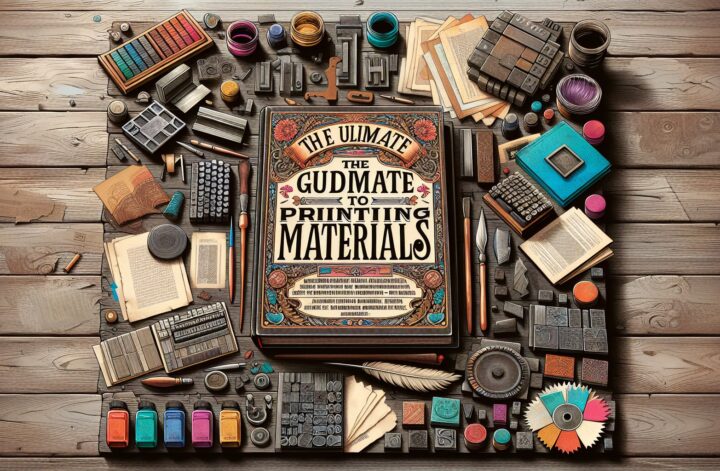Introduction
Have you ever wondered how printed materials are produced? From flyers and brochures to business cards and posters, printing materials are an essential part of marketing and communication strategies for businesses and individuals alike. But have you ever considered the various materials that can be used for printing? In this guide, we will explore the different types of printing materials available, their characteristics, uses, and how to choose the right material for your printing needs.
Body
Understanding Paper
Paper is one of the most commonly used materials in printing and comes in a wide range of weights, textures, and finishes. Here are some popular types of paper used in printing:
-
Coated Paper: This type of paper has a smooth, glossy finish achieved by adding a coating to the paper during manufacturing. Coated paper is often used for high-quality prints, such as magazines and catalogs, as it enhances color vibrancy and image sharpness.
-
Uncoated Paper: Unlike coated paper, uncoated paper has a rougher texture and a natural feel. It is commonly used for items like business cards, letterheads, and envelopes. Uncoated paper absorbs ink effectively, making it suitable for designs that require a more rustic or organic look.
-
Recycled Paper: As the name suggests, recycled paper is made from recycled materials, reducing its environmental impact. It has become increasingly popular in recent years due to its eco-friendly nature. Recycled paper comes in various textures and finishes, suitable for a range of printing needs.
-
Cardstock: Cardstock is a thick, sturdy paper commonly used for items that require durability, such as business cards, postcards, and invitations. It comes in different weights, commonly measured in points, with heavier weights indicating increased thickness.
Exploring Synthetic Materials
While paper is widely used for printing, there are also synthetic materials that offer unique advantages. These materials are robust, tear-resistant, and often withstand rough handling, making them ideal for outdoor or long-lasting applications. Here are a few commonly used synthetic materials:
-
Vinyl: Vinyl is a versatile material used for a range of printing applications, including banners, signs, and adhesive stickers. It is durable, weather-resistant, and can be easily customized to meet specific design requirements. Vinyl prints are commonly used in both indoor and outdoor settings.
-
Polypropylene: Polypropylene is a lightweight, flexible, and water-resistant material commonly used for banner printing and displays. It is known for its durability and ability to withstand various weather conditions. Polypropylene prints are commonly used for trade shows, retail displays, and other temporary signage.
-
Polyester Film: Polyester film, often referred to as Mylar, is a transparent and tear-resistant material. It is commonly used for applications where a clear, see-through effect is desired, such as window graphics, overhead transparencies, or promotional displays. Polyester film prints offer excellent visibility and can be used both indoors and outdoors.
Specialized Printing Materials
In addition to paper and synthetic materials, there are several specialized printing materials that cater to specific applications. These materials are ideal for adding unique effects, finishes, or functionality to your prints:
-
Foil: Foil is a metallic material used to create a shiny, reflective effect on printed materials. It can be applied to specific areas of a design for added visual impact. Foil prints are commonly used for luxury packaging, business cards, and invitations. The process of applying foil is known as hot foil stamping or cold foil transfer.
-
Embossing: Embossing involves creating a raised or 3D effect on the surface of a printed material by pressing it against a metal die. This technique adds texture and depth to designs, making them visually appealing and tactile. Embossing is commonly used for business cards, stationery, and luxury packaging.
-
Spot UV: Spot UV printing involves creating a glossy, raised coating on specific areas of a design, which contrasts with the rest of the matte or satin finish. This technique adds a luxurious touch and can enhance important elements of a design, such as logos or text. Spot UV printing is commonly used for business cards, postcards, and brochures.
Conclusion
Printing materials play a crucial role in the success of any printed project or marketing campaign. By understanding the different types of materials and their respective characteristics, you can make informed decisions to ensure your prints look and feel exactly as you envisioned. Whether you choose paper for a classic look, synthetic materials for durability, or specialized materials for added effects, finding the right printing material is vital for achieving your desired outcome. So, the next time you plan a print project, consider the wide range of materials available and unleash your creativity to make a lasting impression.

